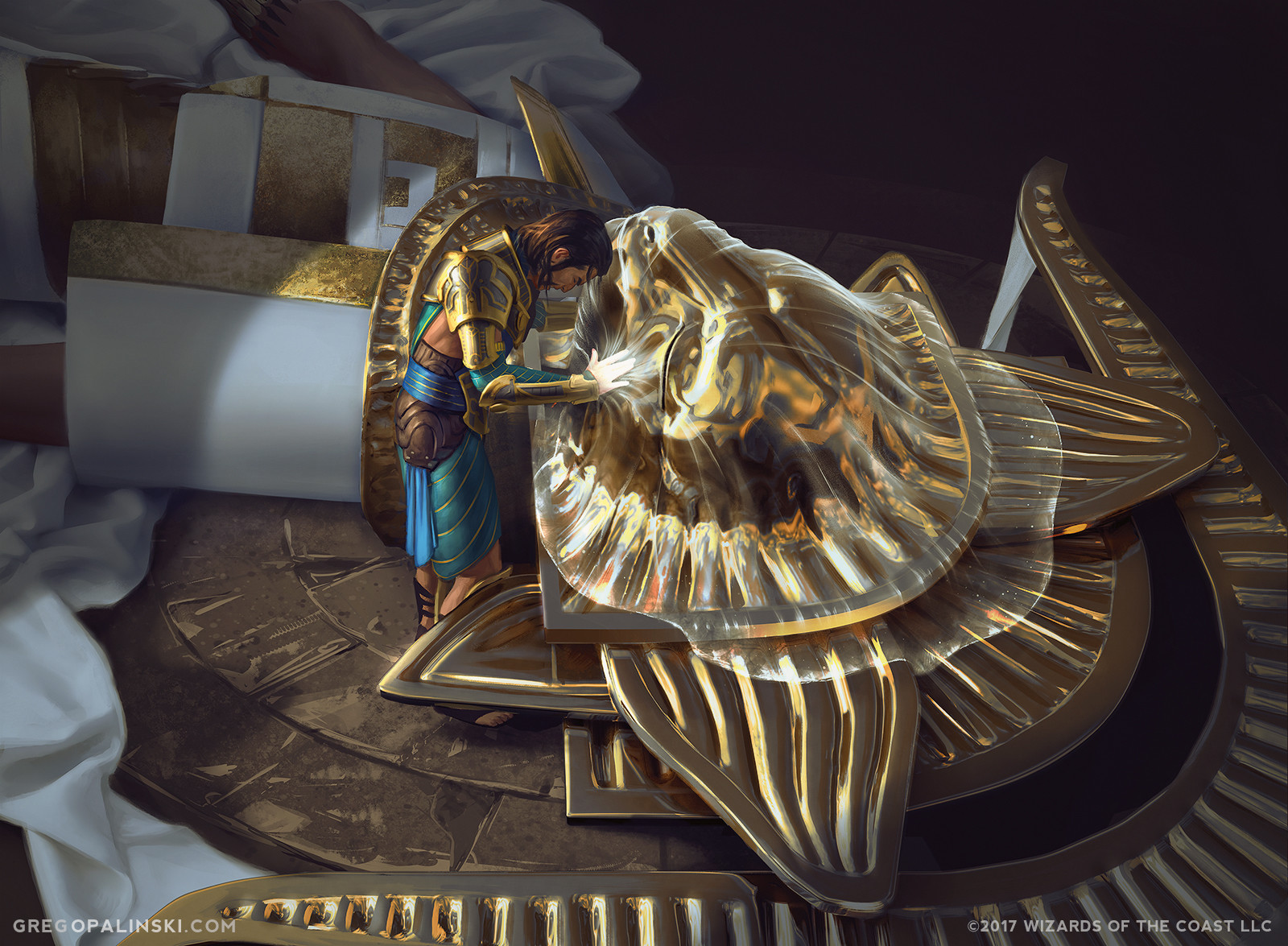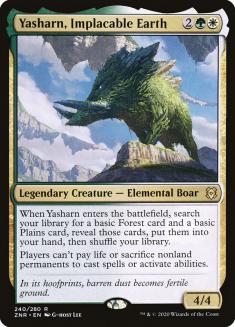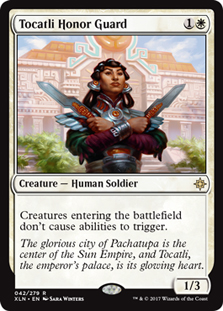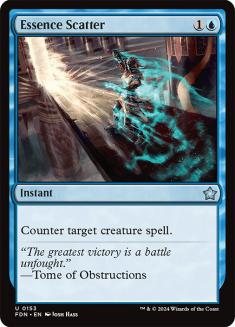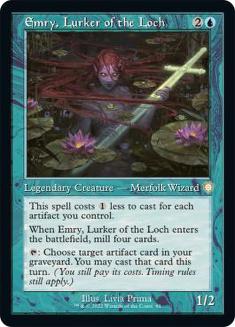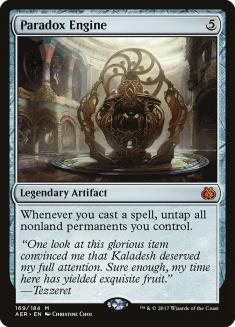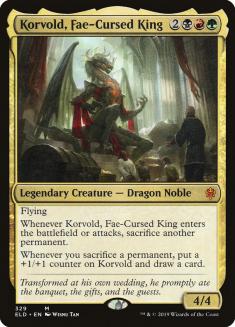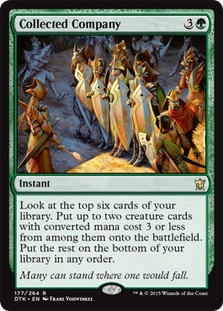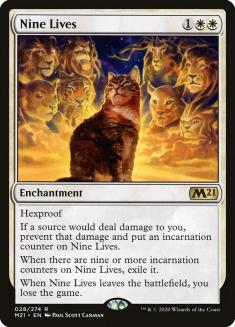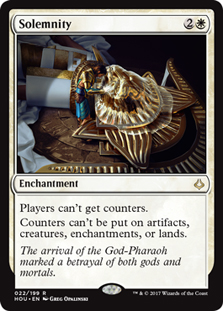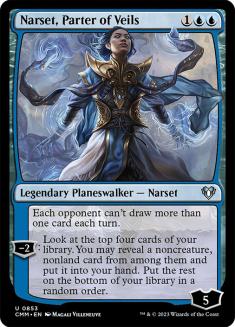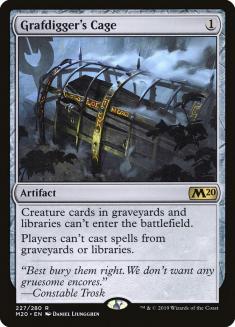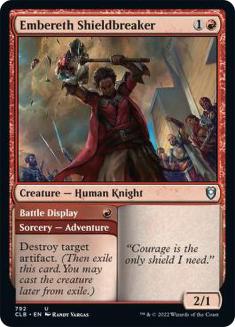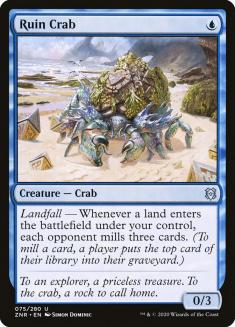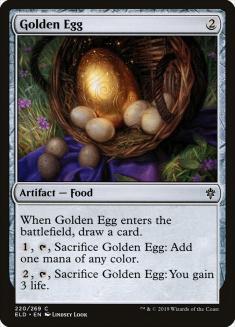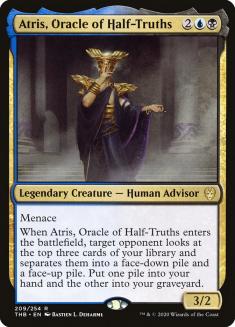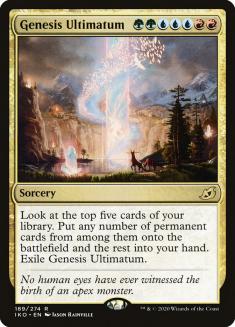Double format Constructed events are always packed with information and the Zendikar Rising Championship is no exception. Based on this event, you should know exactly what to expect in Historic and Standard for the next week or two.
For everyone who may have missed some of the details and those who only think they caught everything, here’s where the formats sit.
Broad Formats, Narrow Results
The narrative before Round 1 was a fairly open Standard metagame and Historic looking a bit more clustered but with some cool outliers. In the end, both formats had really clear winners, many of those fancier options were dominated, and the top of the heap wasn’t anything unexpected.
While these results implied best decks, I don’t think that things are as absolute as we have seen over the last year. If Gruul Adventures is the best deck in Zendikar Rising Standard, it isn’t a Temur Reclamation or Sultai Food situation. You can play the sixth best deck in the format and still have a reasonable shot at Top 8, or even a set of matchups or metagame outcomes that make it likely. Compare that to the Temur Reclamation situation, where the only ways to come out ahead against the deck were your opponents being incompetent or catching a one-week exploit window where they cut Storm’s Wrath. Gruul Adventures sometimes just loses because its cards are variable quality, its mana isn’t flawless, and its best cards setup dependent.
We are living through the busting of the “big data ruins formats” myth. You can know the best deck, have win rate tables based on large sample sizes, but still have options for the players who don’t want to play it.
That Uro Thing
If there’s anything that challenges the idea that you can play a bunch of stuff and still win, it’s Uro, Titan of Nature’s Wrath in Historic. If you look at the Historic decks at the top of the standings at the end of the event, it’s just a stack of Uros.
I think some of this might be a ladder versus tournament difference, and we saw this when Sultai was dominating the SCG Tour Online while being just a fine deck in Magic Online Challenges or Arena ladder. Playing the Zendikar Rising Championship with open decklists gives the Uro + Thoughtseize deck a massive edge. You know whether your hand with two Fatal Push is going to be great or terrible in a matchup, and thanks to the London Mulligan and Uro you can easily go down to six cards and crush your opponent if you have the right answers and a threat.
I’ll probably still play an Uro deck for next week’s Arena Kaldheim Qualifier Weekend, but that’s just me and Thoughtseize doing the same thing for over a decade. If you don’t want to look at an opening hand and know you’re going to crush half the field and die to the other half, play something else and feel fine in your choice knowing the “best deck” is much higher risk under those slightly different conditions.
Creatures (9)
Planeswalkers (4)
Lands (28)
Spells (19)

Playing Four-Color Midrange for Yasharn, Implacable Earth was a better decision for this specific event due to the massive amounts of Rakdos and Jund Sacrifice, but those decks did pretty poorly this weekend. I would expect Sultai Midrange to be a better choice by next weekend.
The one detail that might change that is Tomas Pokorny’s Tocatli Honor Guards. When Seth Manfield won the Mythic Invitational with Sultai Midrange earlier this year, he was playing Grafdigger’s Cage in his sideboard to shut off Muxus, Goblin Grandee. I thought this was insanity since it cut off your own Uros, and without that card as a dominating finisher it was easy to die to the rest of the Goblins deck. Tocatli Honor Guard’s interaction with Uro is significantly more profitable since you just get to cast Uro for 1GU and keep it and it also shuts off Goblin Matron. We see much of the same with Hushbringer in other decks, but with Sultai taking a more defensive position than Azorius Auras in the matchup Tocatli Honor Guard’s ability to block a 2/2 is more important than chipping away with the one flying power Hushbringer offers.
We’re delving a bit more into the realm of personal opinion now, but despite Essence Scatter showing up in some of the winning lists I would caution against it. When I was winning with Sultai in all formats prior to Zendikar Rising, I went down the countermagic road in Historic only to be disappointed. Despite me describing it as a defensive deck, Sultai Midrange is a very proactive defensive deck. You would get into weird binds where you wanted to tap out and just do things to push towards your game-ending threats, and then your window for Essence Scatter would be missed. I get that Essence Scatter is the thing that stops Muxus where nothing else does, but Pact of Negation was always much more effective more me as that single card that could save the day.
Creatures (15)
Planeswalkers (5)
Lands (19)
Spells (21)

If I’m talking about Uro, I can’t move on without mentioning the secret Uro deck of the event. Kai Budde and Joel Larsson had a great Day 1 and a miserable Day 2 with Paradox Engine combo featuring Uro. I think this was largely their Day 2 opponents having a day to hear about the deck and figure out they would have to beat Skysovereign, Consul Flagship after sideboarding even if it didn’t immediately sound like something Kai would bring in. The more important aspect to highlight is we are seeing more broken decks hybridize with Uro in the format. First it was Aetherworks Marvel and now this Paradox Engine deck. So far losing both halves of your combo + Uro deck to Grafdigger’s Cage has been a common issue, but if you have a combo deck that doesn’t get Cage’d and can lean on Uro as a secondary plan that’s a format changing development in Historic.
Other Historic Headlines
Creatures (19)
Planeswalkers (1)
Lands (25)
Spells (15)

Creatures (25)
- 2 Scrapheap Scrounger
- 3 Midnight Reaper
- 4 Priest of Forgotten Gods
- 4 Dreadhorde Butcher
- 4 Mayhem Devil
- 4 Cauldron Familiar
- 4 Woe Strider
Lands (23)
Spells (12)

The Jund Sacrifice debate raged on at this event. Prior to Zendikar Rising David “tangrams” Inglis won a SCGTour Online Championship Qualifier with a Food and Korvold, Fae-Cursed King list that mirrored the old Standard versions. Immediately after at the Mythic Invitational, Gabriel Nassif made the finals with a Collected Company version while the Korvold list floundered. At the Zendikar Rising Championship the scales tipped again and Korvold came out on top, with medium finishes from the Collected Company list.
The main difference appears to be the need to undercut Goblins versus the need to overpower midrange and avoid losing to Grafdigger’s Cage. When you need to beat faster creature decks, the Collected Company list has more cards that let you pull off multiple play turns early and swing a game. But given the deck is all small creatures it is vulnerable to an overload of sweepers and some strong threats, where Trail of Crumbs changes the texture of those matchups a lot more. I still think the Korvold list is the best choice for the near future, but that could change rapidly.
Lands (23)
Spells (37)

While Grzegorz Kowalski’s Standard choice let him down, Mono-White Solemnity certainly looked impressive. Unfortunately, I can’t imagine that remains true for much longer. Beating the deck is simply a matter of acknowledging it exists and playing a couple cards that do anything against it. These cards don’t even need to be excessive or specific hate cards. Just splitting your Mythos of Nethroi and Maelstrom Pulse slots in Four-Color Midrange (or playing a Teferi, Hero of Dominaria) to avoid a single Gideon’s Intervention does a ton of work. Stomp shuts off damage prevention and Bonecrusher Giant is just a normal good card. Play a Blast Zone. None of these are 100% unbeatable for Mono-White Solemnity, but every extra hoop they need to jump through is a point in the game everything can fall apart for them.
The more successful Prison deck might actually be Azorius Control. Brad Barclay had a clean 7-0 sweep of Historic during the Swiss with a creatureless, maindeck Grafdigger’s Cage version of the deck. If you absolutely insist on playing a non-Uro deck, you should be playing this deck or Muxus.
Gruul, In My Standard? It’s More Likely Than You Think
A single copy of Gruul Adventures made the elimination rounds of the SCG Tour Online $5K Kaldheim Qualifier #3, and it immediately lost once there. That was less than ten days ago. The deck has been similarly absent from other events over the last couple of weeks, and the Edgewall Innkeeper shell migrated over to Temur Adventures with Obosh, the Preypiercer.
Then Gruul Adventures was the most played Standard deck this weekend at the Zendikar Rising Championship, and it was back to its old levels of success.
I have no reasonable explanation for what happened here. I’ve tried to blame Ugin, the Spirit Dragon, Mire Triton, and Vivien, Monsters’ Advocate but none of those narratives hold up to any scrutiny.
Gruul is just great, it was always great, and everyone just suffered from a shared delusion for a while that it wasn’t great. The matchup data only shows it losing to Mono-Green Food, and with the Autumn and Emma innovation of playing maindeck Embereth Shieldbreakers to cover The Great Henge I’m unsure that data is even still valid.
I wish I had more relevant data or thoughts to add here, but I hope my utter lack of ability to state anything behind “Gruul good, Gruul smash” points to how big of a metagame misstep the world at large took. If you’re playing a deck that largely ignored its Gruul matchup because the deck was falling out of favor, you should stop doing that and play a deck that respects Embercleave.
Tuning the Other Decks
Creatures (19)
- 1 Gadwick, the Wizened
- 4 Brazen Borrower
- 4 Thieves' Guild Enforcer
- 4 Ruin Crab
- 2 Zareth San, the Trickster
- 4 Soaring Thought-Thief
Lands (25)
Spells (16)

While the Zareth San, the Trickster versus Lurrus of the Dream-Den debate raged on in the Dimir Rogues section of the metagame, everyone came to the conclusion that Ruin Crab was good again. This was primarily a way to punish the durdly Temur Adventures decks popping up, but also works out great against Mono-Green Food’s slightly slower starts. Dimir Rogues is now a mill deck with aggro starts, as opposed to the tempo deck with mill inevitability it was previously.
I generally hate playing Dimir Rogues, in part because every game of the mirror makes me feel like a turnip trying to do long division, but if it’s your jam I would recommend sticking with the Crab list. Mono-Green Food isn’t going anywhere soon.
As for Zareth versus Lurrus, I’m slightly on the Zareth San side right now. This isn’t just because the only Rogues deck to Top 8 the Zendikar Rising Championship played Zareth, but mostly because Lurrus is a game-breaker in attrition matchups and way too many people are playing Lovestruck Beast right now to worry about that. I would rather have access to Lurrus if I expected a ton of mirrors, but at best I think Dimir Rogues’ metagame presence remains steady moving forward. Again, you should trust your own Rogue-ish instincts over mine if you’ve played the deck at a level higher than a crab playing Scrabble, but this is just my opinion from the other side of the table.
Creatures (6)
Lands (31)
Spells (43)

I’m a huge fan of Luis’s decision to build Esper Doom Foretold less like a Doom Foretold deck and more like a real control deck that incidentally has good Doom Foretolds. As every other deck in the format becomes more streamlined, I don’t want to mess around with stuff like Omen of the Sun that just isn’t a good card to cast.
That said, you should probably not play the actual control decks. The Dimir Control deck that companions Yorion, Sky Nomad and goes hard on Ugin, the Spirit Dragon and flickering Atris, Oracle of Half-Truths is in that category of sixth best decks you can play if that’s your jam, but the 60-card Lochmere Serpent deck is not. It did horribly this last weekend, and my experience playing it was you were basically a Burn deck where you needed your Lochmere Serpents to do seven damage before dying and your Shark Typhoons to close the rest. You have no real engine while every other deck has an engine and pressure to bury you from multiple angles. At least Ugin is a win button the other version can press.
Similarly, I’m much less excited about the Temur Adventures options compared to a week ago. A field of actual scary competition showed up out on nowhere and you aren’t just a perfectly positioned Mono-Green Food exploit any more.
Go Your Own Way
There’s a lot of fringe decks that were played at these events that can be swiftly thrown in the garbage: Azorius Auras and Colorless Ramp in Historic, Mardu Doom Foretold (Yorion) in Standard to name a couple.
But that doesn’t mean there isn’t more room to try even more stuff.
Creatures (4)
Lands (23)
Spells (33)
- 2 Negate
- 4 Essence Scatter
- 4 Drown in the Loch
- 4 Didn't Say Please
- 1 Cling to Dust
- 2 Shark Typhoon
- 4 Heartless Act
- 1 Eliminate
- 4 Mazemind Tome
- 3 Sublime Epiphany
- 4 Jwari Disruption
Sideboard

When the sixth best deck is in striking distance of the best deck in a format, there’s a lot of room to make something as good as the sixth best deck. Or aim to make something that good and end up with an even better result.
While I can sit here and criticize the positioning of certain known decks, that says nothing about what the field could hold. Even if Standard and Historic have looped full circle to prior metagames, things are still a bit different. We know a little more about what people should be playing and what the negative space in each format is to exploit.
If you have a pet deck that didn’t show up this last weekend that has an angle to take against the format, and that can stand on its own against the peak Gruul or Sultai deck of its specific format, I don’t think I can say you are wrong in advance of seeing what happens when you give it a spin in a real event.
If that isn’t Magic at its best, I don’t know what is.

